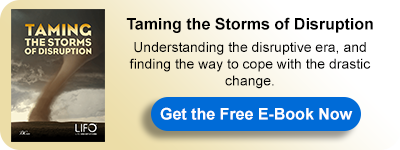The Disruptive Era, the Future of Jobs, and How to Lead
The rise of peer-to-peer technologies has fueled the “gig economy’s” recent workforce growth. Companies like Airbnb and Uber have shifted the labor force from corporate-to-consumer to individual-to-consumer distribution.
This transformation in the labor market affects the old employment model and has significant economic implications due to incorporating new technology. This has resulted in the “disruption economy,” affecting labor for businesses, individuals, and governments.
Employers will need to reconsider their working relationships with present employees. The popularity of the gig economy is boosting the number of workers who take up gig work when they abandon their regular jobs for a position in this new full-time workforce.
This will need firms devising new strategies to maintain their current personnel, particularly at a time when unemployment is low so that any employees who leave can be replaced.
Employment will be mechanized and change in nature, while new jobs will be created that are unavailable. Workers will need to be adaptable, collaborative, be digitally adept. In addition, they will need to handle high complexity, respond to a large number of requests or demands for attention and response, manage/filter signals and noise, and match themselves with work in skills-based economies rather than knowledge-based economies. There will undoubtedly be a rise in IT-related occupations.
Still, they’ll be more likely to be combined with other roles and industries as the lines blur as the Internet of Things pushes us to link everything, bringing technology and humans closer together.
Leading through the Disruptive Era2
1. Maintain Your Visibility
Disruption necessitates what is referred to as “visible leadership”: the capacity to interact with all of the stakeholders (workers, suppliers, consumers, and investors) with vigor and purpose.
During times of turmoil, leaders must be visible, approachable, and genuine. People will naturally assume the worst in the absence of your comforting remarks and may begin sharing doom-and-gloom beliefs on social media.
2. Adopt a Culture that Encourages Ongoing Changes
Many of today’s disruptive technologies travel new and uncharted territory, from drone at-home deliveries to virtual mechanical repairs. As a result, businesses must cultivate a culture that encourages continuous innovation, quick response times, and course corrections.
Take the payments business, for example. New technologies, ranging from digital wallets to contactless payment systems, are constantly hitting the market, necessitating prompt responses from industry players.
3. Encourage Open and Honest Communication
Jack Welch once said that openness is “business’s biggest dirty little secret.” Welch was noted for his openness and ability to tell it like it was, no matter how uncomfortable it caused others. Leaders need to learn to confront upheaval, which is vital to address issues in an upfront, no-holds-barred manner.
4. Invest in Project Managers
Organizations are increasingly relying on project managers to advocate for technology, inspire teams to deploy innovative solutions, supervise course corrections, and become an authority on disruptive technology as emerging technologies permeate the workplace. High-performing businesses are increasing their investments in project management personnel through training, structured processes, defined career paths, and knowledge transfer to meet this transformation.
5. Develop a Resilient Mentality
According to a survey conducted in partnership between Harvard Business Review and Odgers Berndtson’s Leadership Service, a whopping 88 percent of confident executives assessed their organization’s capacity to demonstrate resilience as excellent. On the other hand, resilience was identified as a vital feature by only 1% of respondents who were concerned about their organization’s ability to handle disturbance.
6. Communicate the Organization’s Basic Principles and Mission in a Clear and Consistent Manner
According to a recent Gallup poll of four European countries, leaders and managers need to do a better job of persuading employees that short-term adjustments are aligned with the organization’s long-term goal. Only one-third of employees in France, Germany, Spain, and the United Kingdom strongly believe that their company’s leadership has a clear vision for the business. Only 21% strongly agree that their company’s leadership makes them excited about the future. Employees’ uneasiness about their status in the organization is often alleviated by a frequent discussion regarding the organization’s future.
7. Maintain a High-Development Culture
According to Gallup, eighty percent of those who think that their organization is devoted to strengthening each employee’s talents feel supported in learning new skills.
Employees who already work in a high-development culture are less likely to see change as a threat. Employees are used to having regular interactions with management about their professional development in such situations, so the requirement to learn about new technology is just another part of a continuous conversation about training options. Many European companies may need to emphasize employee development; less than a third of employees in Germany, Spain, and France strongly agree that their company supports them in developing the skills they need for the future. In contrast, employees in the United Kingdom only score slightly higher, with 37% strongly agreeing.
1GovDocs, 27 Jun 2017, Anne PT Jakala, The New Disruption Economy and its impact on the workplace, Accessed 31 Dec 2021, https://www.govdocs.com/the-new-disruption-economy-and-its-impact-on-the-workplace/
Linkedin, 7 Oct 2018, Christine Gulbranson, The Future of Work: The Impact of Disruptive Technologies on Jobs and Skills, Accessed 30 Dec 2021, https://www.linkedin.com/pulse/future-work-impact-disruptive-technologies-jobs-christine-gulbranson/
2Forbes, 26 May 2020, Eric Beaudan, Four Strategies Leading Through Disruption, Accessed 29 Dec 2021, https://www.forbes.com/sites/forbescoachescouncil/2020/03/26/four-strategies-for-leading-through-disruption/?sh=2071dac01e8c
Forbes, 15 Mar 2019, PMI Forbes Insights, What it takes to lead in an Era of Disruption, Accessed 29 Dec 2021, https://www.forbes.com/sites/insights-pmi/2019/03/15/what-it-takes-to-lead-in-an-era-of-disruption/?sh=6736994fcc51
Gallup, 20 Sep 2019, GHASSAN KHOURY AND JEREMIE BRECHEISEN, The Future of Work means managing through disruption, Accessed 29 Dec 2021, https://www.gallup.com/workplace/266870/future-work-means-managing-disruption.aspx
For more about this topic, download our latest book "Taming The Storms Of Disruption" for FREE:
